Syria Crisis: ASEAN Economies Hit By Higher Fuel Subsidy Costs
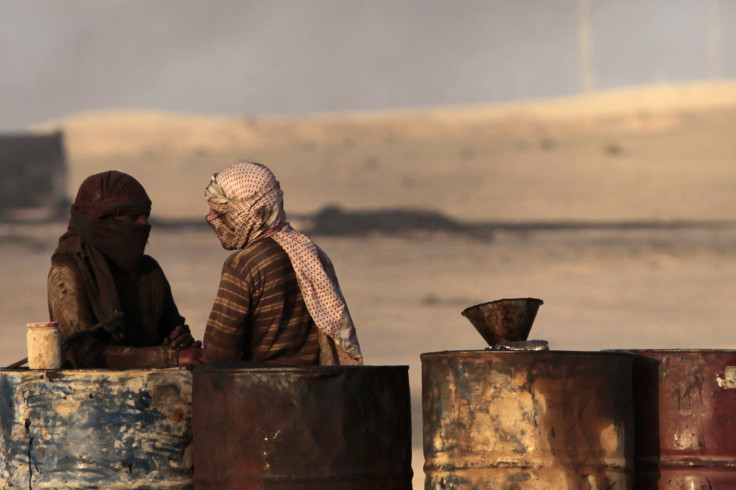
Prospects of potential U.S. military strikes against Syria has already claimed its first victims, the remote but vulnerable economies of Indonesia and Malaysia. The link between those nations' fiscal troubles and Syria's civil war is the surging price of crude oil, which could catapult even higher if Iran, Russia and various key Middle East oil producers are drawn into an expanded military conflict.
Worries over the effect of U.S. cruise missile attacks against Syria have injected a fear factor into global crude oil prices, which were already rising because of tight supplies. Markets are already coping with a supply loss from OPEC producer Libya, where widespread worker protests, prolonged port closures and full storage tanks have sent production plummeting.
Exports have shrunk to around 80,000 barrels per day, less than a tenth of capacity. Elsewhere, ongoing U.S. and European sanctions in Iran, recurring pipeline attacks and technical issues in Iraq, continued pipeline vandalism and oil theft in Nigeria, as well as civil unrest in Egypt, Syria and Yemen, have all contributed to the decline in global oil supplies.
The upshot has been global oil supplies decreasing by 1.2 million barrels per day relative to last year. This shortfall extends to as large as 4 million barrels per day when measured against maximum production levels in Libya, Iran, Iraq, Nigeria, the North Sea, Syria, South Sudan and Yemen in the last three years, according to Francisco Blanch, head of global commodity and asset allocation research at Bank of America Merrill Lynch.
On Thursday, Brent crude prices rising 30 cents to more than $115 a barrel, while U.S. oil jumped by more than $1 to trade above $108, near session highs. But that could look cheap if the Syrian civil war draws in Iran, Russia and other Middle East nations, which together supply about a third of the world's crude oil.
The most likely scenario, Blanch said, is a short-lived oil spike to between $120 and $130 per barrel, with a contained military strike that lasts only a few days. But in a worst-case scenario, where Syria turns into a protracted Vietnam-style boots-on-the ground proxy war, oil could see a $50 barrel price swing.
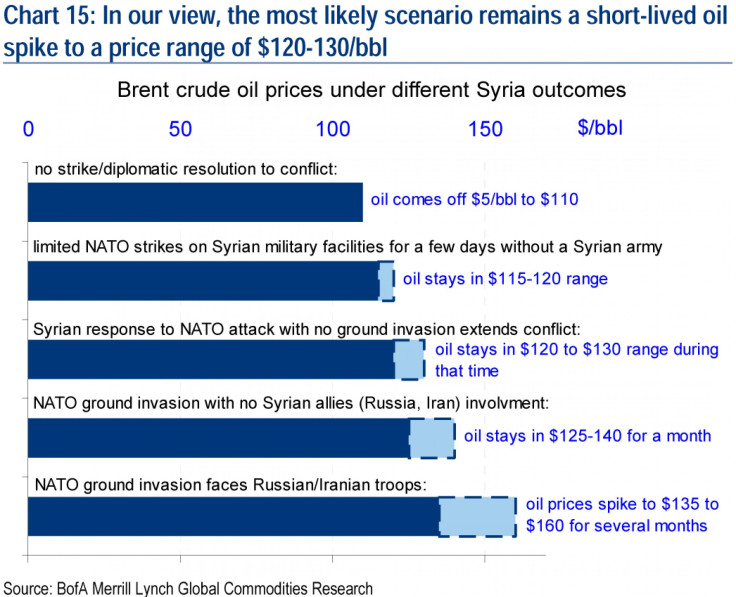
Asia is a large net oil importer and vulnerable to oil price increases. Such an oil price surge comes at a particularly bad time, when several Asian countries -- particularly India and Indonesia -- are already facing pressures from high inflation, large fuel subsidies, and widening oil-trade deficits.
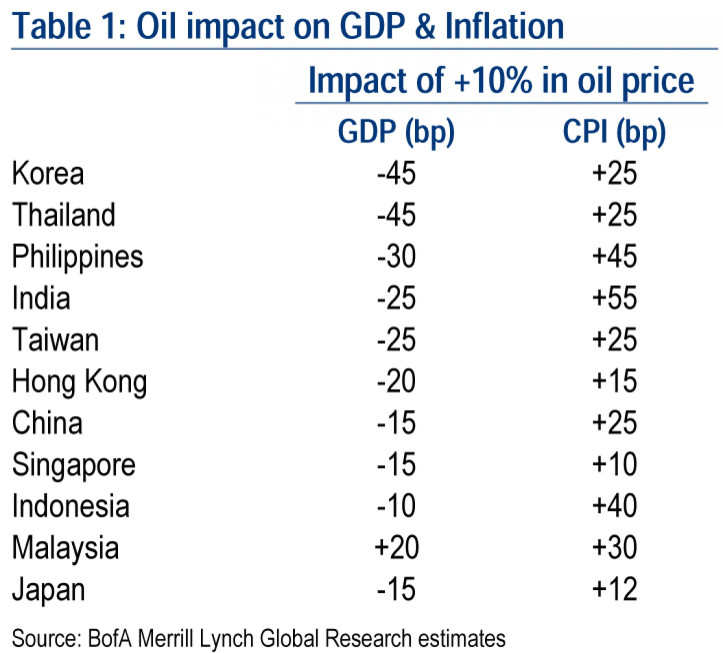
“Rising global oil prices would increase fuel subsidy costs and strain the fiscal deficits for several ASEAN countries,” said Chua Hak Bin, Southeast Asian economist at Bank of America Merrill Lynch in Singapore.
Indonesia, Malaysia and Thailand provide the most generous fuel subsidies.
Both Indonesia and Malaysia, in particular, have seen a sharp widening in the oil-trade deficit. Indonesia’s oil-trade deficit widened to about 2.6 percent of GDP in 2012.
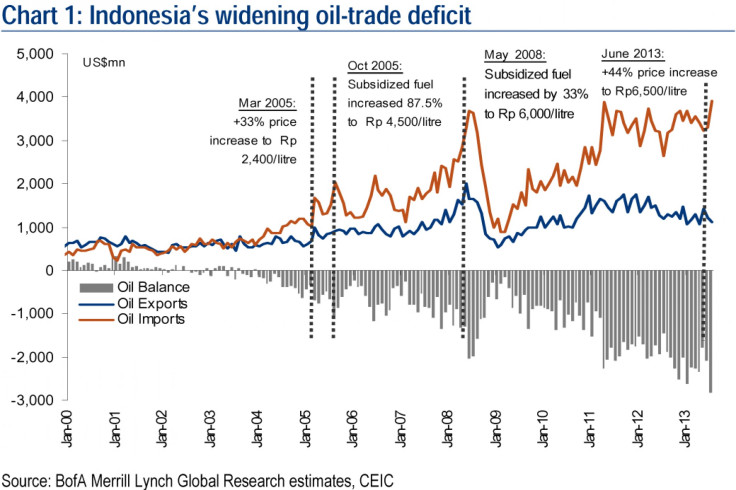
Indonesia's government cut a huge fuel subsidy on June 22, causing petrol prices to rise by 44 percent and diesel by 22 percent, as fuel subsidies ballooned and threatened to breach the fiscal deficit constitutional limit of 3 percent of GDP. The subsidies are estimated to cost about $20 billion a year, equivalent to almost 3 percent of Indonesia's GDP.
In the latest July reading, the oil-trade deficit ballooned to $2.8 billion (from $2.1 billion in June) as oil imports surged, despite the sharp fuel price hike.
Malaysia’s oil-trade surplus has dwindled into a small deficit in the early part of this year, as oil production slumps and fuel consumption increases.
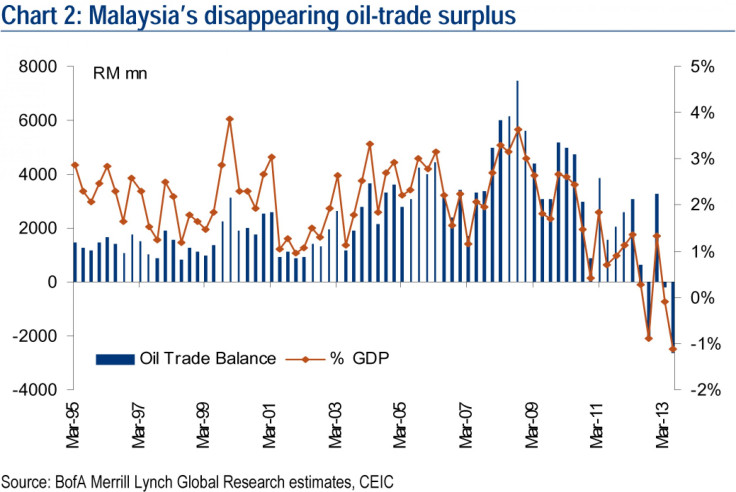
On Monday, Malaysia cut fuel subsidies for the first time in more than two years, raising subsidized gasoline and diesel prices by about 10 percent. The move has raised some worries that consumer prices in the country may also jump in the coming months and that the central bank will have to raise rates earlier than expected.
© Copyright IBTimes 2024. All rights reserved.




















